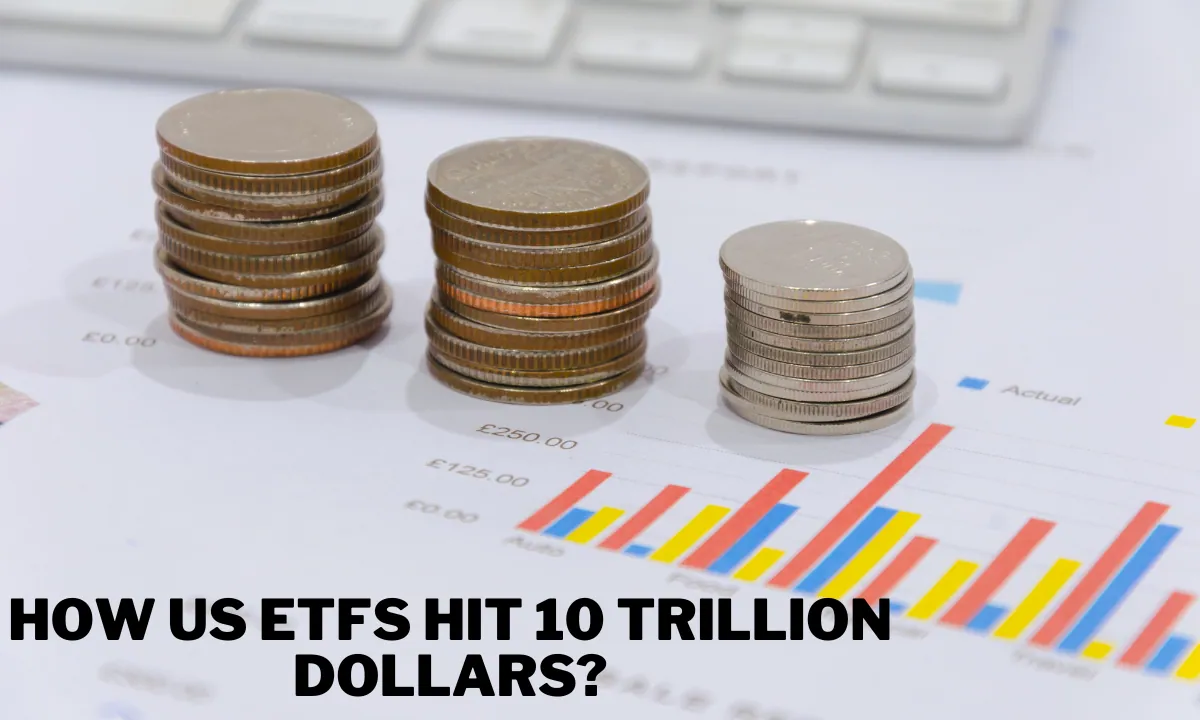The US Exchange-Traded Fund (ETF) market has reached a significant milestone, surpassing $10 trillion in assets under management (AUM) for the first time.
This achievement highlights the growing dominance of ETFs as a preferred investment vehicle for investors seeking diversification, liquidity, and cost-efficiency.
The surge in assets comes alongside record-breaking activity in new ETF launches, signaling robust demand and innovation in the industry.
A Record-Breaking September for New ETF Launches
September 2024 marked a historic month for the ETF industry, with 126 new ETFs debuting, the highest number of monthly launches ever recorded, according to CFRA Research’s ETF database.
This is a massive increase from August, which saw only 38 new ETF listings. By the end of September, the total number of new ETF offerings for the year had climbed to 508, according to etf.com data.
In contrast, ETF closures remained relatively modest. Although 19 ETFs shuttered in September—up from nine in August—the overall number of closures for the year stands at 156, highlighting the net positive growth in the ETF sector.
This stark difference between ETF launches and closures illustrates the rapid adoption of ETFs by investors across various asset classes and themes.
The industry’s expansion is not just about quantity; it is about the continued innovation and broadening scope of offerings, catering to a wider range of investor preferences and market strategies.
Key Drivers of the ETF Market Boom
Several factors have contributed to the ETF market reaching the $10 trillion mark:
- Market Gains: The strong performance of equity markets over the past decade has significantly boosted ETF asset values, particularly as major indices like the S&P 500 and NASDAQ have reached new highs.
- Investor Shift from Mutual Funds to ETFs: ETFs have become the go-to choice for investors looking to reduce costs while gaining diversified exposure to different asset classes. ETFs generally offer lower fees than mutual funds, which has led to a notable shift in investor preferences.
- Increased Adoption by Retail and Institutional Investors: More investors, from individuals to large institutions, are gravitating toward ETFs due to their liquidity, transparency, and tax efficiency. These benefits make ETFs ideal for long-term investments, active trading, and portfolio hedging.
Focus on Fixed Income and Thematic ETFs
The fixed-income and thematic ETF segments have seen considerable growth in recent months. In September, State Street Global Advisors launched 10 new SPDR SSGA Corporate Bond ETFs, each targeting specific maturities between 2026 and 2034.
This move capitalized on investor demand for precision in fixed-income investing, allowing portfolio managers to align their bond strategies with specific investment horizons.
Thematic investing also continues to gain traction. In September, Themes ETFs introduced several industry-focused products, including:
- The Themes Lithium & Battery Metal Miners ETF (LIMI), are designed to capture growth in the electric vehicle and battery space.
- The Themes Copper Miners ETF (COPA), tapping into rising demand for copper in infrastructure and renewable energy.
- The theme Uranium & Nuclear ETF (URAN), focuses on the nuclear energy sector as a potential solution to global energy challenges.
Cryptocurrency-related ETFs also remain a hot topic in the industry. Roundhill Financial debuted the Roundhill Ether Covered Call Strategy ETF (YETH), following the rising popularity of spot Ethereum ETFs, which launched in July and have attracted significant investor interest.
These funds represent the increasing mainstream acceptance of digital assets within traditional portfolios.
A Slower Pace for ETF Closures
While the industry celebrated the surge in new products, some ETFs have been phased out. Notable closures in September included products from Amplify Investments, such as the Amplify Inflation Fighter ETF (IWIN) and the Amplify Emerging Markets FinTech ETF (EMFQ).
KraneShares also closed three ETFs, including the KraneShares S&P Pan Asia Dividend Aristocrats Index ETF (KDIV).
Despite these closures, the overall market continues to trend upward, with new launches far outpacing shutdowns.
A 14-Year Journey to $10 Trillion
The growth of the ETF industry has been nothing short of remarkable. According to Bloomberg data, it took the market 14 years to expand from $1 trillion to $10 trillion in assets. This meteoric rise has been driven by several factors, including:
- Technological advancements that make trading ETFs easier and more efficient.
- The increasing preference for passive investing strategies that mirror the performance of market indices, rather than active management.
- The growing trend of environmental, social, and governance (ESG) investing, has spurred the creation of new funds catering to sustainability-focused investors.
What’s Next for the ETF Market?
As the ETF industry celebrates the $10 trillion milestone, it shows no signs of slowing down. Innovation in the space is expected to continue as more niche and thematic products emerge to meet specific investor demands.
Moreover, the ongoing trend of shifting assets from mutual funds to ETFs is likely to persist as investors seek more efficient, cost-effective ways to gain market exposure.
Shortly, we could see even more cryptocurrency ETFs, including products tied to Bitcoin and Ethereum, become a larger part of the ETF landscape.
Additionally, ESG-focused funds are expected to remain popular, especially as global investors grow increasingly conscious of the social and environmental impact of their portfolios.
The journey from $1 trillion to $10 trillion was fueled by innovation, market performance, and evolving investor preferences.
The next phase could see even greater diversity in the types of assets and strategies available through ETFs, making the industry an essential part of modern investing.
Conclusion: ETFs Poised for Continued Growth
The US ETF market has solidified its place as a critical component of the global financial landscape, surpassing $10 trillion in assets and counting.
With new launches consistently outpacing closures, and investor demand for cost-effective, diversified investment options growing, ETFs are poised for even greater expansion in the coming years.
As more asset managers develop specialized ETFs across various sectors and asset classes, the industry will likely remain a dominant force in global markets.










